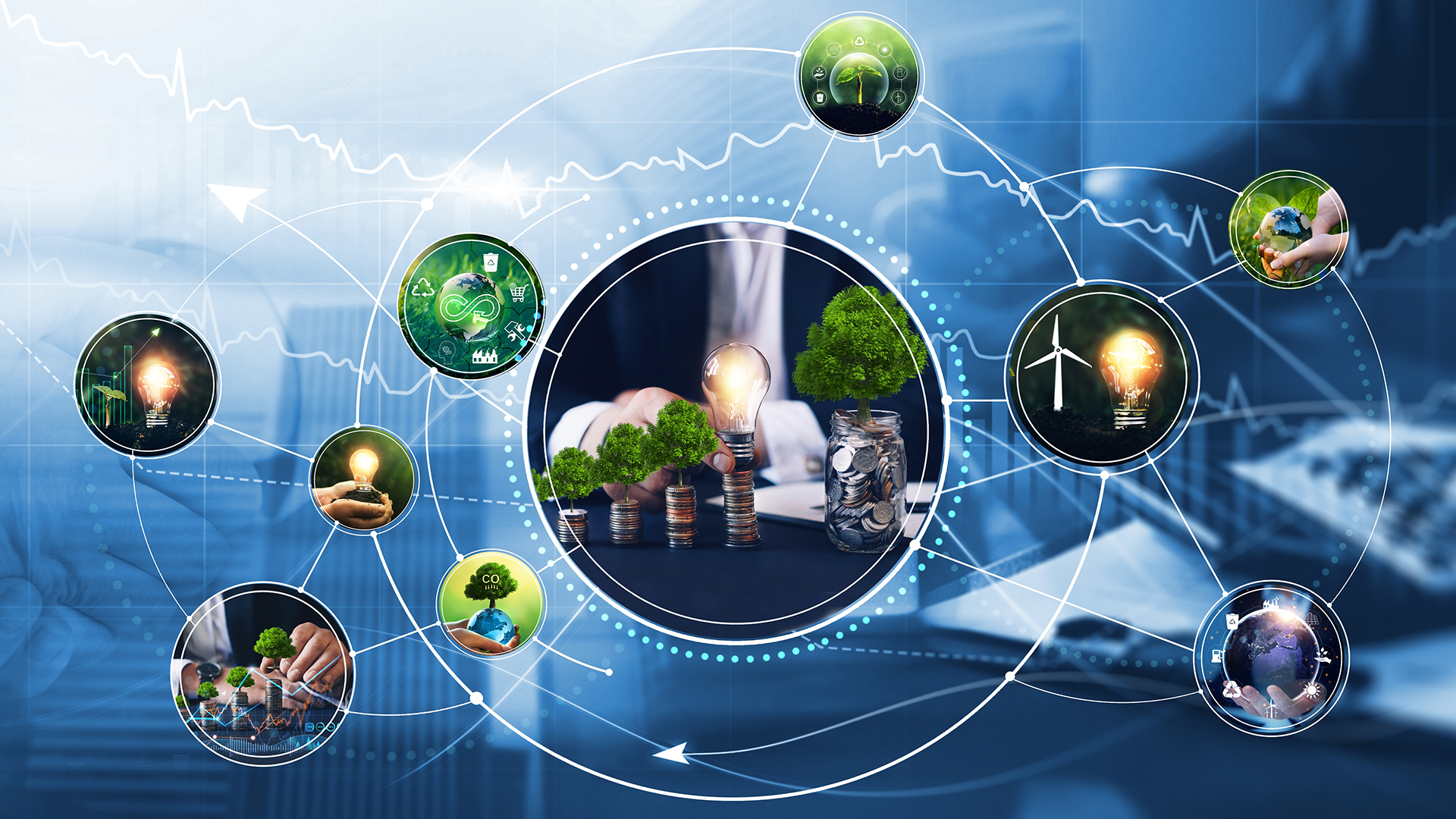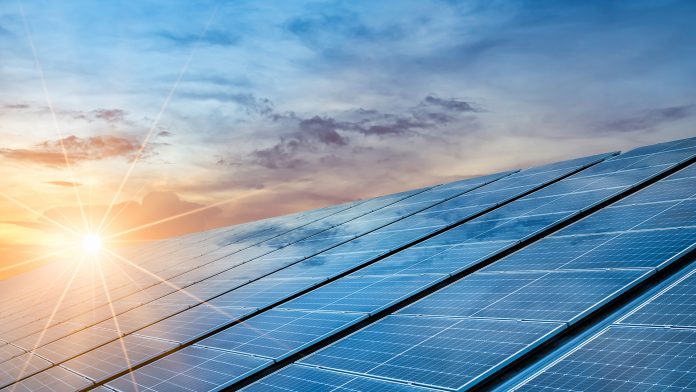Simon Bennett, Energy Technology Analyst at the International Energy Agency, stresses the importance of innovation in sustainable energy, as investment in clean energy technologies soars above that of fossil fuels.
As the world works to rapidly reduce its dependence on fossil fuels, it is clear that investment and innovation in clean energy technologies are more important than ever.
Recently, the International Energy Agency (IEA) released a World Energy Investment report looking at the world’s progress in achieving clean energy transitions, with a focus on investment. The 2023 report offers a full update on the investment outlook for 2022 and gives initial predictions of the emerging picture for 2023. The report outlines some clear positives in terms of sustainable energy investment, but warns that some risks do lie ahead.
The main takeaway from the report is that investment in clean energy technologies is significantly outpacing spending on fossil fuels. This is attributed to an increased demand for more sustainable options due to recent societal events which have raised affordability and security concerns. The report predicts that annual clean energy investment is expected to rise by 24% from 2021 to 2023, compared to just a 15% rise in fossil fuel investment. However, with over 90% of this increase coming from advanced economies and China, the IEA has stressed that this presents a risk of new dividing lines in global energy if clean energy transitions elsewhere do not accelerate.
To learn more about the findings from the report and the importance of innovation in clean energy, The Innovation Platform spoke to Simon Bennett, Energy Technology Analyst at the International Energy Agency.
How important is continued innovation in clean energy technologies?
This is a topic that is absolutely central to our efforts to reach net zero greenhouse gas emissions by mid-century, but it is one that is often poorly understood and communicated. Advocates at the extremes of the spectrum make claims that can be paraphrased as ‘we already have all the technologies we need to decarbonise energy’ and ‘it will be too expensive to transition to clean energy until innovation delivers better types of technologies’. Unfortunately, these types of claims are unhelpful for investors and policymakers who need to decide which new technologies to fund and what risks to take in the public interest.
At the International Energy Agency, you model pathways that can put the world on track for a clean energy future. How do you think about the need for innovation?
In general, we think it is important to break it down into three chunks that we analyse separately.
First and foremost, we know that technology innovation is an intrinsic part of the economy and who we are as a society. It is the power of innovation that has brought us to the point where we can be confident of avoiding the worst climate outcomes. Thanks to research and development (R&D), policy support, venture capital and competition between manufacturers, the price of a solar module fell more than 90% from 2009 and 2019, to the point where we can rely on it becoming the backbone of many non-fossil energy systems. In parallel, nuclear energy arose from high-risk investments in innovation and is currently enjoying a resurgence of new ideas. We know that technical improvements will arrive as the market opportunities for clean energy technologies grow, even for established products.
In the IEA Net Zero by 2050 Scenario for the world, solar photovoltaic (PV) and wind surpass one third of total energy supplies by 2050, equivalent to 5% annual market growth, which is unachievable without continuous adaptation designs to make them competitive for more consumers in ever more applications. In this scenario, solar gets 60% cheaper over the next three decades. While we don’t need to know exactly what scientific developments will underpin this, governments must give innovators the best possible conditions to keep testing improvements to cells, modules, products, and installations. The same is true for batteries, electric vehicles (EVs), heat pumps, home energy management systems and others.
At the same time, IEA analysis of the net zero challenge found that there are limits to fossil fuel emissions that can be avoided by 2050 using the suite of technologies already commercialised. Our technology portfolio needs to be completed by products and processes that can help renewables penetrate further into sectors such as steel and cement production, aviation and shipping, as well as deploy CO2 capture and storage to deal with pollution that cannot be tackled in time or cheaply enough by renewables alone.
Our Clean Energy Technology Guide, which tracks the status of clean energy technologies worldwide, shows that solutions exist for all these emissions, but some of the key pieces of equipment have not yet been sufficiently tested at commercial scale in a competitive environment. Given the sheer amount of CO2 generated by some of these sectors – for example, steel and cement account for 14% of global energy-related CO2 today – we estimate that half of the fossil fuel emissions that need to be avoided by 2050 do not yet have ‘off the shelf’ technologies. The good news is that many of these, including hydrogen-based iron ore reduction and direct capture of CO2 from the air, are mature enough to be demonstrated at full scale. We have included them in our Net Zero scenario, but we also highlighted that more than $90bn of public funds are needed for large demonstration projects around the world. Encouragingly, a number of countries at the Global Clean Energy Action Forum 2022 pledged to commit this money and we aim to report on their progress. If this is realised, these technologies can become bankable and have the potential to stand on their own feet wherever markets recognise the costs associated with unabated fossil fuel use.
The third aspect concerns the distribution of these funds. Our modelling shows that 40% of investments in the global energy system to reach net zero emissions by 2050 need to be in emerging market and developing economies. These are the countries where new investments are needed in heavy industry and other infrastructure to support growing populations and aspirations for prosperity. We have some concerns that the specific economic, social and climatic contexts in many of these countries are not receiving attention by clean energy technology developers. The dual challenge of directing international attention to clean energy technologies for these regions and supporting their local, self-sustaining innovation ecosystems are beginning to be taken up in high places. In May 2022, the leaders of the G7 countries signed a Clean Energy Economy Action Plan that vows to keep supporting R&D and deployment of clean technologies as a critical enabler of an accelerated clean energy transition in low- and middle-income countries.
It was found that investment in clean energy research and development hit record highs last year. How did this compare with expectations and what does this say about government and company commitments to net zero?
In our World Energy Investment 2023 report, we estimate that public spending on clean energy R&D reached $35bn in 2022 and corporate spending hit around $130bn. In both cases, this was roughly a 10% increase on the previous year and a return to the growth seen before the COVID-19 pandemic. At the same time, early-stage venture capital funding for clean energy start-ups surged by 20%.
Of course, it is impossible to say how much should be spent on clean energy research each year, because there is wide variety in the effectiveness of spending to achieve a given breakthrough and the fastest progress will always surprise us by arriving from unexpected sources. However, the trend is nonetheless very good news. It shows that governments and companies are acting in line with their pledges to transition their energy systems and recognising the double dividend of this type of innovation for the economy and the environment. It is not a big stretch to suggest that clean energy technologies represent one of this century’s biggest growth opportunities, and so it is great to see increased activity in countries such as Brazil, as well as more familiar spenders like Australia, China, the EU, Japan, the UK, and US.
Do you predict a similar increase in R&D spending in upcoming years?
Personally, I would be surprised if the trend does not continue upwards in the next few years. The increases in 2022 have come despite pressures on public budgets from the pandemic and inflation, and finance ministries have stayed the course so far. Companies in sectors such as automotive manufacturing are responding to competitive pressure shaped by regulation and consumer expectations towards electric vehicles that are only growing stronger. Targeting more funds towards priority technology challenges and effective innovation systems will raise our chances of a rapid energy transition.

The only area where I would raise a question mark is around venture capital investment for start-ups seeking to scale-up quickly. This important form of finance, which takes bets on technological diversity and moves into promising areas in ways that incumbent firms cannot, has struggled with the changes in the macroeconomy in the past 12 months. There are things governments can do to help high-potential firms stay solvent and innovate, but overall we may need to suffer a near-term setback before a robust rebound. The strong market expectations for clean energy are undimmed for this decade, which is a better outlook than other tech areas seeking venture capital.
Do any particular areas of the sustainable energy market have a particular need for innovation and investment moving forward?
From a technologists’ perspective, I am excited by progress from many directions. We’ve had great news recently about enhanced geothermal systems for power generation or heat supply, and, since policy support emerged, we’ve seen a stream of new ideas for making cheaper hydrogen from clean electricity. I think it is inspirational that brilliant minds are working on ways to integrate passive energy into building design, such as harnessing the heating and cooling power of the sun and wind through materials and architecture. Experience has shown time and time again how energy efficiency in the built environment needs clean energy technologies that fit people’s preferences, comforts, and personal priorities.
The big opportunities may ultimately be for products that can help directly substitute waste heat or electricity for fossil fuels but, given the urgency of the climate crisis, it is diversity that gives us the best chance of rising to the challenge. Governments, working with philanthropists and others, are the only ones in a position to collectively build a portfolio of options for each piece of the emissions puzzle. These options may start out at very different stages of maturity, and new early-stage ideas can be added over time. For example, it would be risky to bank on reducing fossil fuel emissions from steel production around the world by only trialling one approach, such as using hydrogen to replace natural gas, without the insurance from testing options based on CO2 capture or outside bets like direct iron ore electrolysis.
From a policy perspective, I see tremendous opportunity for governments and investors to learn from one another about what types of interventions are most effective. There is ample variety in the approaches of different programmes and regulations around the world, but too little attention to evidence and evaluation of the things that increase the chances of innovation success. The problem is a pressing one, especially given that large investments in new energy-consuming infrastructure in fast-growing economies are looming and will make the transition harder if low-emission alternatives are not competitive. Furthermore, clean energy technologies have become much more heterogeneous this century, embracing modular products like batteries, digital services like virtual power plants, traditional pipeline infrastructure, new sectors like lithium extraction and many, many more. Each of these will likely benefit from a different balance between public R&D grants, market incentives, access to information and financial tools.
As the IEA enters its 50th anniversary year in 2024, we will continue to build these considerations into our longstanding relationships with stakeholders in all parts of the energy conversation.
Please note, this article will also appear in the fifteenth edition of our quarterly publication.









